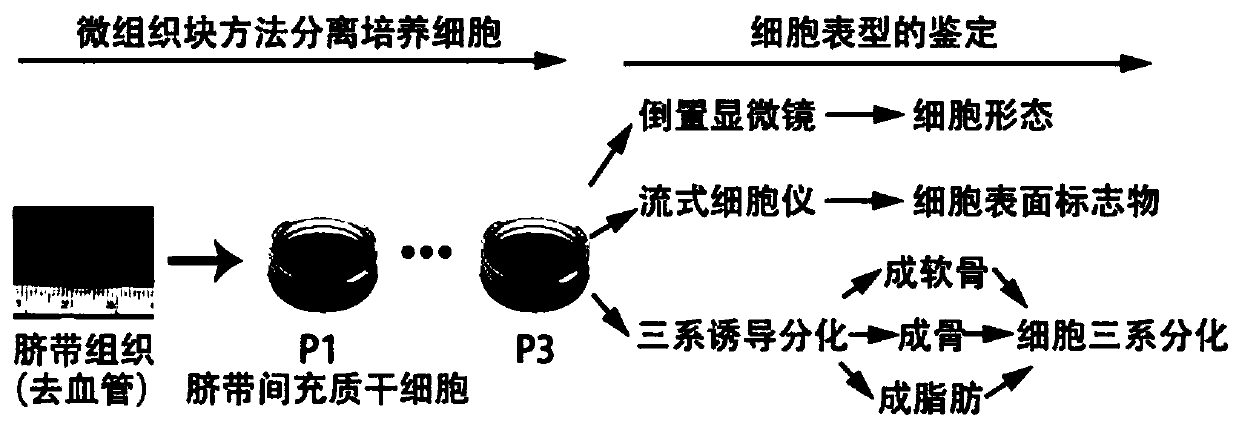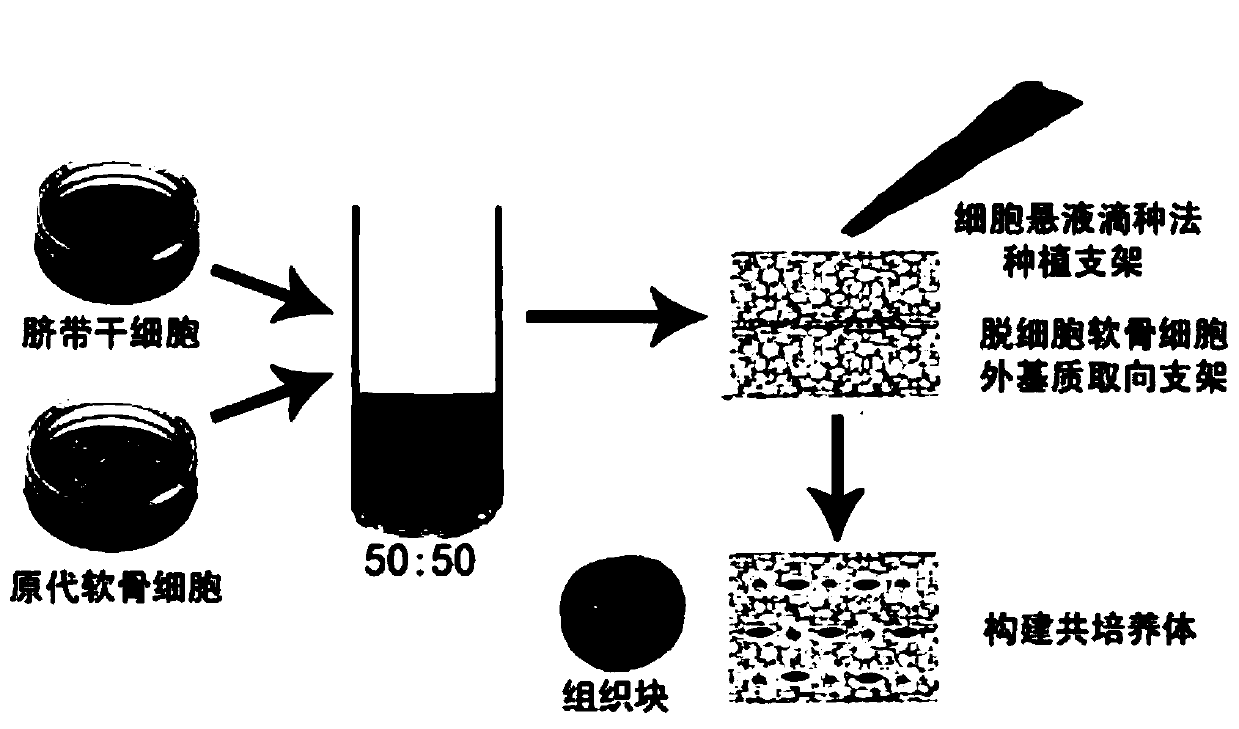Method for promoting cartilage repair based on tissue engineering cartilage constructed by co-culture system
A technology for tissue engineering and cartilage repair, applied in the culture process, tissue regeneration, tissue culture, etc., can solve the problems of inducible factor concentration, action time and environment that are difficult to control, prone to hypertrophy or calcification, and poor mechanics of fibrocartilage. Achieve good chondrogenic differentiation potential, good cartilage repair potential, and good biocompatibility
- Summary
- Abstract
- Description
- Claims
- Application Information
AI Technical Summary
Problems solved by technology
Method used
Image
Examples
Embodiment 1
[0040] 1. Separation and acquisition of seed cells
[0041] Isolation and culture of human umbilical cord mesenchymal stem cells: obtain fresh full-term healthy human umbilical cord tissue, clean blood stains, arteriovenous vessels, fascia and adipose tissue under aseptic conditions, obtain Wharton's glue tissue block, cut with sterile scissors Crush the size of 1*1*1mm micro-tissue pieces, add 5ml serum-containing medium (10% FBS, DMEM / F12, 1% glutamine, 1% Vitamin C, 1% penicillin and 1% streptomyces) to the petri dish Vegetarian), place a thermostat (5% CO 2 , 37℃) Isolate umbilical cord mesenchymal stem cells, use micro-tissue block culture method to isolate and culture human umbilical cord mesenchymal stem cells, and pass them to P3 generation cells for the construction of a co-culture system. The cells are fibrous cells under an inverted microscope 状morphology. See the procedures for the isolation, culture and identification of human umbilical cord tissue for umbilical cord...
Embodiment 2
[0048] 1. Isolation, culture and identification of human umbilical cord mesenchymal stem cells (hWJMSCs)
[0049] Fresh full-term healthy human umbilical cords came from the obstetrics department of our hospital. After the patient’s informed consent, the blood was removed under aseptic conditions and then placed in a DMEM / F12 medium culture dish to remove arteriovenous vessels. Wash again several times with culture medium and cut to 1mm 3 Large and small tissue pieces are inoculated into a petri dish with a diameter of 15 cm at an appropriate density, added with 5.0 ml DMEM / F12 (containing 10% fetal bovine serum) medium, and placed in an incubator at 37° C. and 5% CO2 saturated humidity. Add 10.0ml of the same medium the next day, continue to culture for 3 to 5 days to change the medium, and remove the tissue blocks after 10 to 14 days. When the cells adhere to 80% and fuse, the cells are digested with 0.25% trypsin-EDTA to collect the cells, and passaged to the third generation ...
PUM
 Login to view more
Login to view more Abstract
Description
Claims
Application Information
 Login to view more
Login to view more - R&D Engineer
- R&D Manager
- IP Professional
- Industry Leading Data Capabilities
- Powerful AI technology
- Patent DNA Extraction
Browse by: Latest US Patents, China's latest patents, Technical Efficacy Thesaurus, Application Domain, Technology Topic.
© 2024 PatSnap. All rights reserved.Legal|Privacy policy|Modern Slavery Act Transparency Statement|Sitemap



